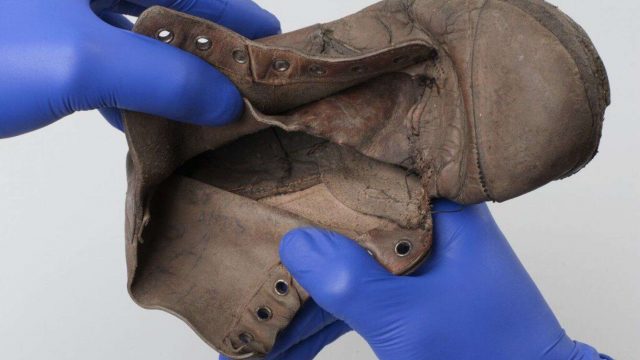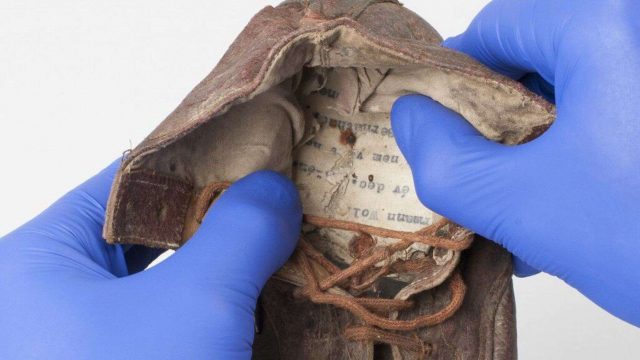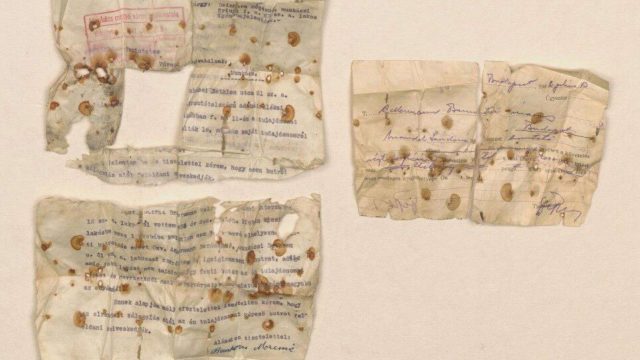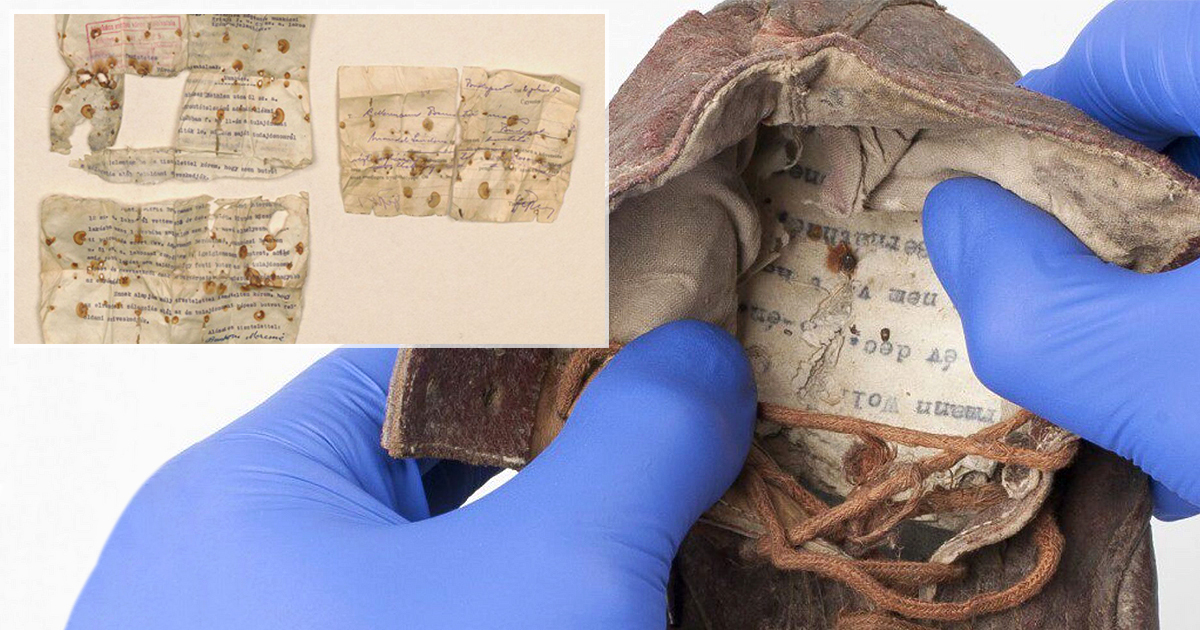Inscriptions found in a child’s shoe at Auschwitz has offered a sad yet informative view into a dark moment of human history. As the most infamous of Nazi concentration camps, Auschwitz opened in 1940 and was the largest of camp of its kind. It was located in southern Poland and sometimes referred to as Auschwitz-Birkenau. The camp’s initial purpose was a detention center for political prisoners. However, it eventually transformed into a network of 40 structures where any “undesirables”, which came to mostly mean Jewish people as the war progressed, were used as slave labor and ultimately put to death.
As the Soviet army approached in January of 1945, Nazi officials ordered the camp abandoned and forced approximately 60,000 prisoners to march to other locations. When the Soviets entered Auschwitz, they encountered a grim sight: thousands of emaciated prisoners and piles of bodies left behind.
People were sent to Auschwitz from all over western Europe, and the first country occupied by the Germans, Poland, saw citizens sent first to ghettos, one called the Theresienstadt Ghetto, in Prague. From there people were ultimately sent by train to meet their fate at the horrible camp.

But human nature being what it is, people longed for a way to ensure that, for their children, at least, those who would come later would be reminded of the real individuals who lost their lives there. One way parents did this was by recording information about their children secretly and stashing it away from the prying eyes of SS guards.
Recently, another of these records was found at the memorial, in a pair of shoes belonging to a young boy sent to Auschwitz in October, 1944, about 16 months before the war came to its end. The identity and story of this boy lives on due to his mother’s care and love for his memory. More information about the inscription and display can be found HERE.

He and his mother traveled together on the same train car, #BA 541, although his father was sent on a separate train. The boy, Amos Steinberg, was only six years old, but his mother saw to it he would be remembered by inscribing his name in his shoes, and those very shoes are on display, along with many other pairs, at the Auschwitz Museum. The inscription had not been spotted until very recently when experts were readying shoes for an exhibit.

The boy and his mother didn’t make it, but his father was liberated from a sub-camp, Kaufering, at the war’s end, records show. This find has given life to one Auschwitz story but is not the first time such heartrending discoveries have been made at the memorial. Last year, when renovations were underway to repair one structure, a handful of small items — spoons, forks, and shoemaker’s tools, as well as scraps of fabric and leather — were found hidden behind a chimney flue. Those objects have been cleaned and are now part of the ever-evolving display of objects visitors can see when visiting the camp.
Related Article: Hidden Stash of Prisoner Artifacts Discovered Inside Auschwitz Chimney
The camp and museum, like so many other war memorials, is closed at the moment. When it once again opens its gates, and it will, perhaps this fall or next spring, this child’s shoe from Auschwitz will be on display. His name is there, delicately inscribed on a pair of shoes, because his mother did not want him to be forgotten. Fortunately for her, and for us, he is no longer another anonymous Auschwitz victim.
